Mar 2008
Hong Kong Museum of Art provides guided tours conducted by well-trained museum docents. With audiences ranging from school kids to art experts and the exhibits originating from different cultures all around the world, how did the Museum's docents make every tour informative and enjoyable? We invited our ten Outstanding Docents to share their thoughts with us.
| What do you think is the greatest challenge for a docent? | |
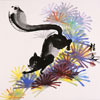 |
Ms Olivia Wu Kwai-man: In reply, I said, "Art appreciation is a very subjective thing. It's because of the difference in taste that we have so many different styles and stylistic schools. I have picked this painting by Lin because with its bold, unrestrained brushwork and vibrant colours, this is representative of his art in his later years." |
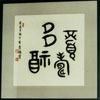 |
Mr Li Tak-po: The purpose for schools to use the guided tours is to give students more exposure to art. In such a hurry, can the purpose be fulfilled? For a docent, it is perhaps a challenge to present works of art in succinct but lucid terms within the shortest time allowable. |
| Can you share with us the most memorable moment(s) in your role as a docent? | |
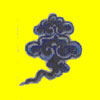 |
Ms Aida Wong Mong-wah: Memorable moment 2: Memorable moment 3: |
 |
Ms Mary Kwai: In earlier days, we had to greet The Friends of the Hong Kong Museum of Art at the basement and invited them to the gallery to view the exhibition. When I stepped into the room, I felt intensely uncomfortable and was so nervous that I had to calm down myself before speaking. Initially, there was little feedback from the visitors. However, the condition gradually changed. I was happy to see that they were listening with eagerness. Finally the tour came to an end, I was applauded and was asked by one of them if I were a curator. I was congratulated for having done a splendid job. |
| How does art touch you and influence you as an art lover? | |
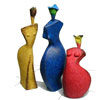 |
Mr Tang Chi-wong: Art is very much a part of our everyday life. The expression of one's emotion and the pursuit of truth, goodness and beauty are all related to art. The vast world of art is full of the wisdom of life. In learning and appreciating art, we get to know different cultures and this broadens our vision, and adds creativity and colour to our life. |
 |
Ms Cecilia Chan Shuk-yee: Art springs from life; it is not some sophisticated subject that is beyond our reach. Art takes us from our small, secluded world to a more expansive realm, easily and naturally, just like having a cup of tea or listening to a song at leisure. It calls up emotions in us, and cleanses our soul. Through the appreciation of and creating an artwork, we get to meet people with similar interests, broaden our scope, enhance our knowledge and enrich our life. |
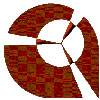 |
Mr Yiu Kam-lung: Art is like stars in the sky and artists are like pilgrims in pursuit of their ideal in different genres. With stamina and perseverance, they probe their way along the long and quiet road of pilgrimage, leaving deep footprints to impress us and show us the direction. All it takes is to open our heart and follow them – and are you willing to? |
| How would you help visitors appreciate a work of art? | |
 |
Mr Wong Kam-luen: I would pick out particular points of interest in a painting to capture the visitors' attention. For example, I would describe Cui Bai's Winter Sparrowsby highlighting the sense of movement of the sparrows – how one glides downwards with its wings spread, how one bird holds its head up while the other looks down as if the two are in dialogue, how the birds peek left and right, or how they somersault, doze and clean their feathers, so on and so forth. I would also point out the deliberate contrast between the fluffiness of the feathers, painted in fine detail, and the bold strokes of angular branches; and, how, with the use of warm colour tones, the artist has created a scene of harmony, peace and happiness. |
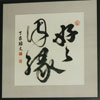 |
Ms Jane Kwan: Being a docent is interesting work. It is an art in itself. There are so many ways to present a work or highlight a theme, depending on who your target audience is. But first and foremost, you have to take an in-depth tour yourself before you can talk about it. Perhaps the best way to start is to pick works that have some relevance to the everyday life of the visitors, so that they can relate to the art in front of them. You can start with what strikes the eye – such as the colours – and get down to the use of lines, the composition, the layout, the content and the idea or ideas behind it, to its place in history, and discuss its uniqueness step by step. |
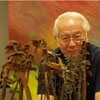 |
Mr Tsui Chi-yu: A painting does not need to get to very explicit detail. A good artist is always subtle in his expression, leaving room for imagination and food for thought, and allows the audience to relate naturally to his art. Take for example, at the exhibition on Impressionism: Treasures from the National Collection of France, the painting The Manneporte at Etretat, Reflections on the Water by Monet shows the stretch of water touching the sky. I told the visitors that it would have become very much a mediocre work if Monet had added a line between the heaven and the waters. |



